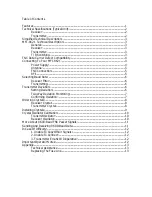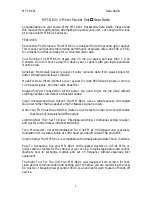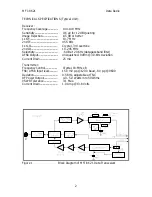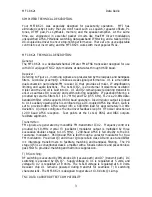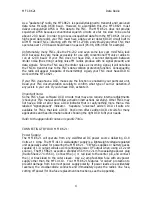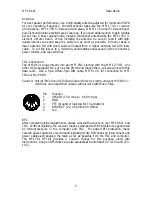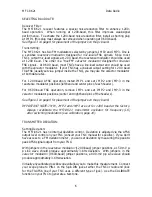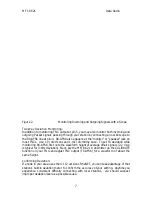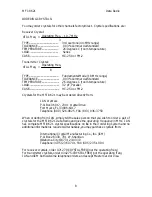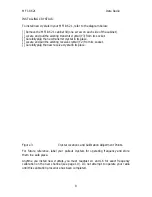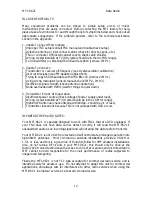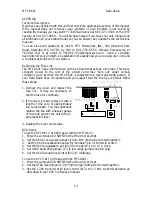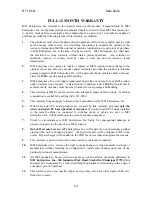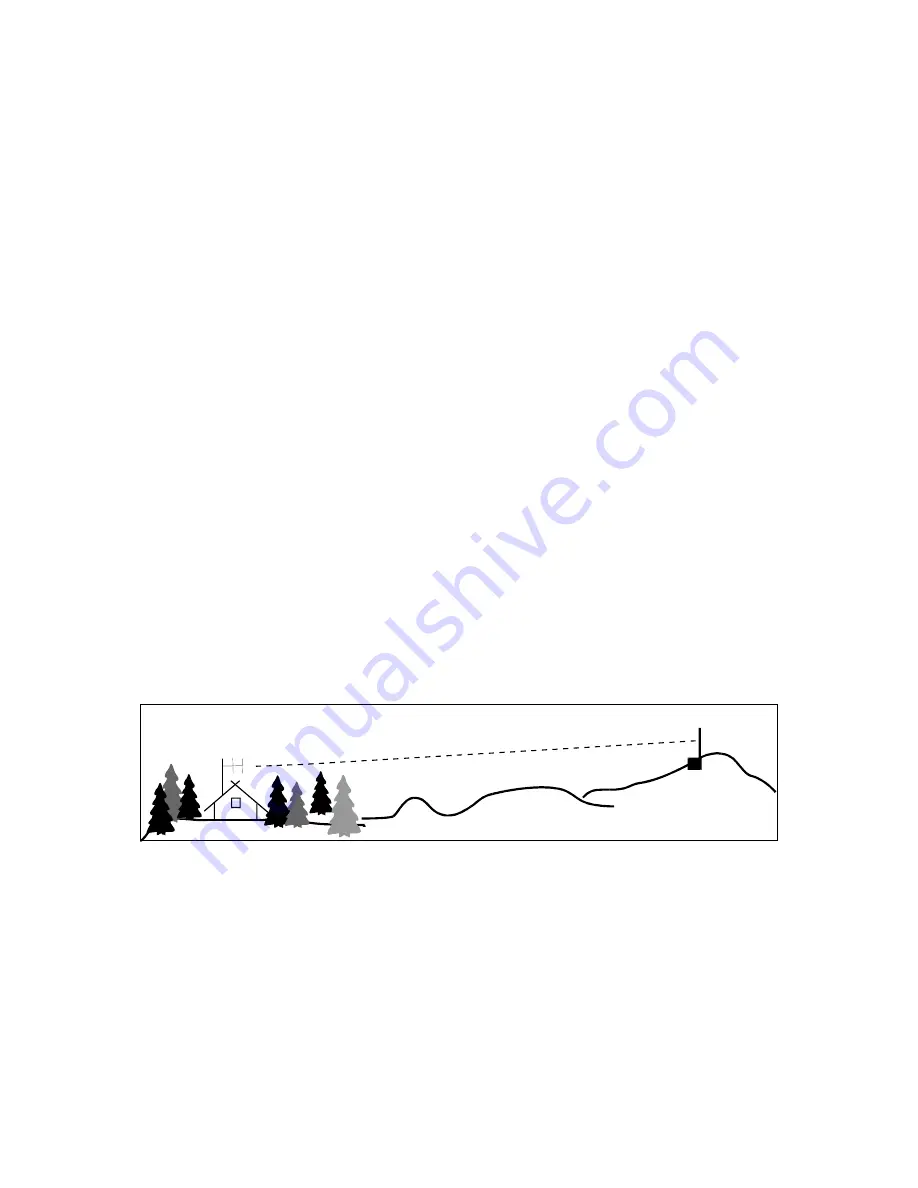
MFJ-8621 Data Radio
11
MORE ABOUT 9600-BAUD FSK PACKET SIGNALS:
The familiar "braaap" generated by 1200-baud packet signals is a combination of
1200 and 2200-Hz sine-wave tones beating together. Although the information being
conveyed by these tones is digital, the transmission system itself is analog and falls
within the range of normal speech. Unlike 1200-baud packet, 9600-baud signals are
transmitted by binary FSK. To understand how this works, suppose you set your radio
at 145.000 MHz with the modem adjusted for 3-KHz deviation. Anytime the TNC
sends a 1, the transmitter should flip 1.5 KHz high in frequency to generate a carrier
at 145.0015 MHz. When the TNC sends 0, the transmitter should flop 1.5 KHz low
to generate a carrier at 144.9985 MHz. This is called FSK-FM (frequency-shift keyed
FM), and there are no analog tones involved--only a rapid switching back and forth
between binary states. In fact, 9600-baud signals sound more like white noise rather
than tones when monitored on a conventional FM receiver. Data signals of this type
require significantly more bandwidth than normal speech. Extended low-frequency
response is needed to sustain prolonged strings of 1s or 0s, and extended high-
frequency response is needed to provide a fast rise time when the signal changes
state. This is why 9600-baud receivers typically use wider IF filters and special RX-FSK
output circuits--and why transmitters often use "direct-FM" modulators which are
especially adapted for FSK.
SENDING AND RECEIVING 9600-BAUD DATA:
Although 9600 baud packet is much faster than 1200 baud, it is also much less
forgiving of marginal signal paths. For one thing, you'll probably need about 5-6 dB in
additional signal strength to overcome wideband noise generated by the receiver's
unusually-broad IF and audio passbands. Also, 9600-baud signals are extremely
vulnerable to phase shift, which means multi-path reflections between stations must be
held to a minimum. Finally, your transmitter and receiver must be accurately adjusted
to frequency and the transmit deviation set for the correct shift.
It's best to think "pipeline" when setting up point-to-point 9600-baud links. A carefully-
aimed yagi generally provides better quieting and less multi-path than omni-directional
antennas. If you are selecting a remote site for your station, please remember the
MFJ-8621 is a $120 amateur radio product and not a $5000 commercial repeater!
Avoid high-IMD locations if you can, or be prepared to provide additional filtering to
reduce the effects of intermod and desensing from nearby transmitters. Also, avoid
unheated buildings; the MFJ-8621 does not come equipped with a crystal oven to
maintain its operating frequency over a wide temperature range. Finally, make certain
your transmitter is not interfering with commercial services sharing the site. Setting
up a node for 9600 takes a little more care, but once you are "up and running", you
can sit back and watch massive files pump through in a matter of seconds!

